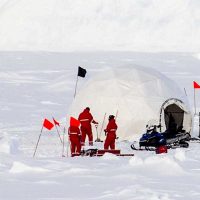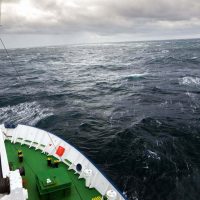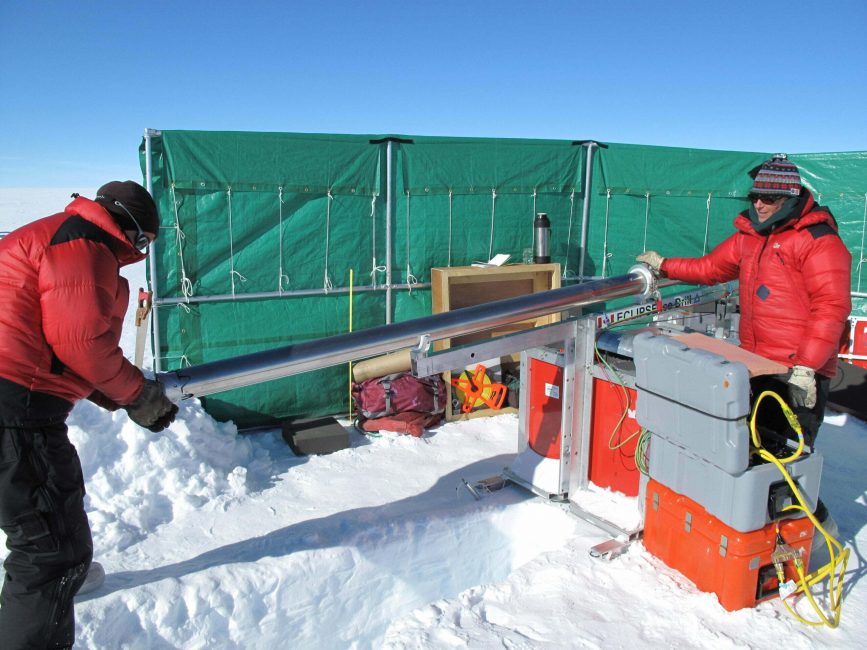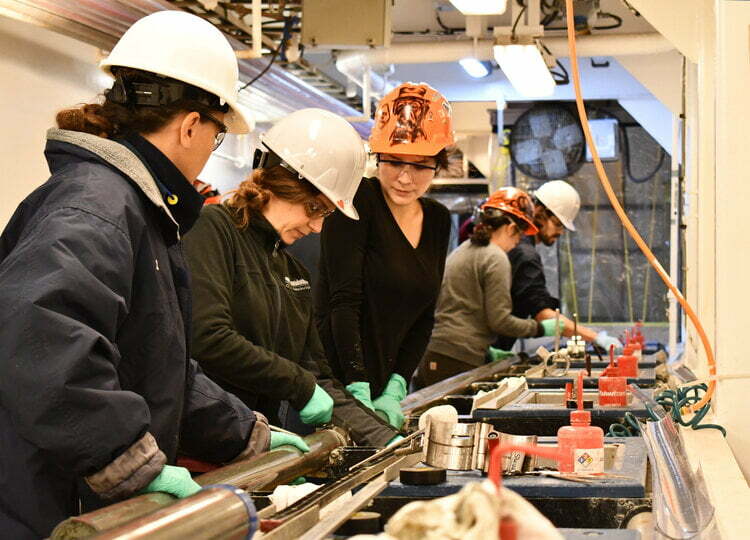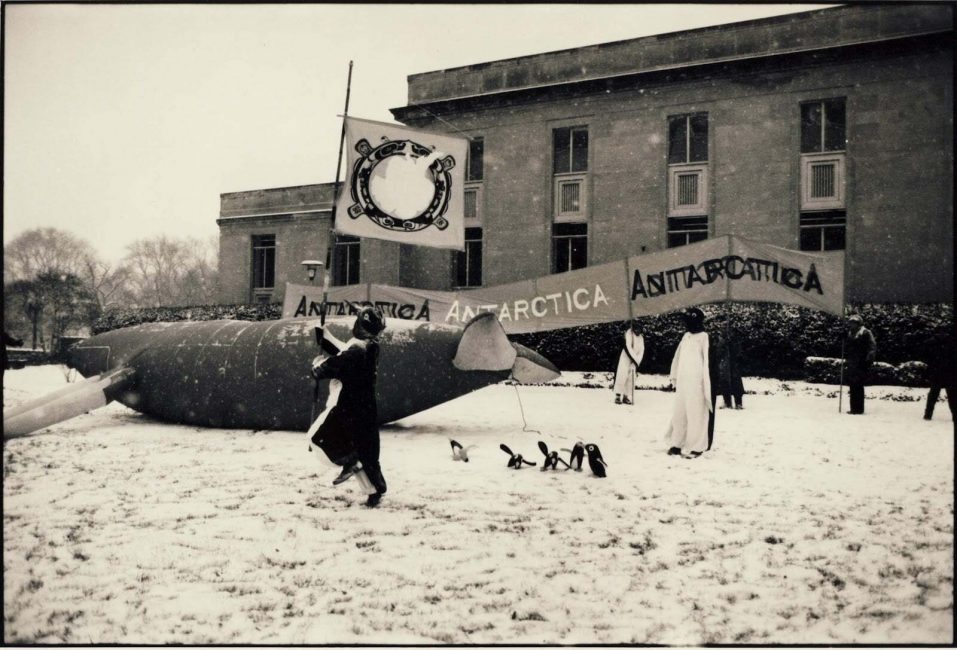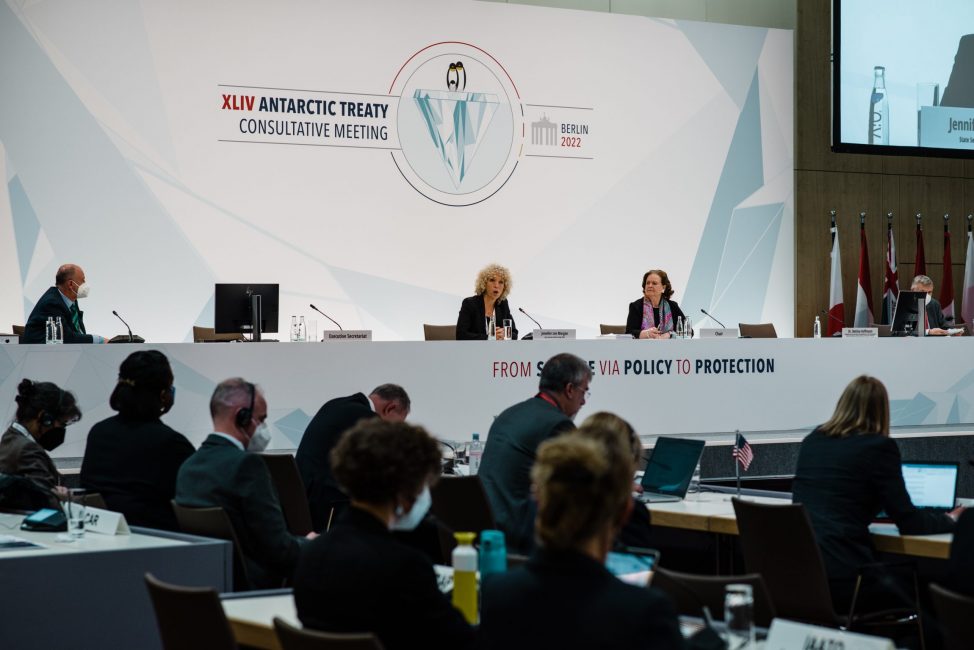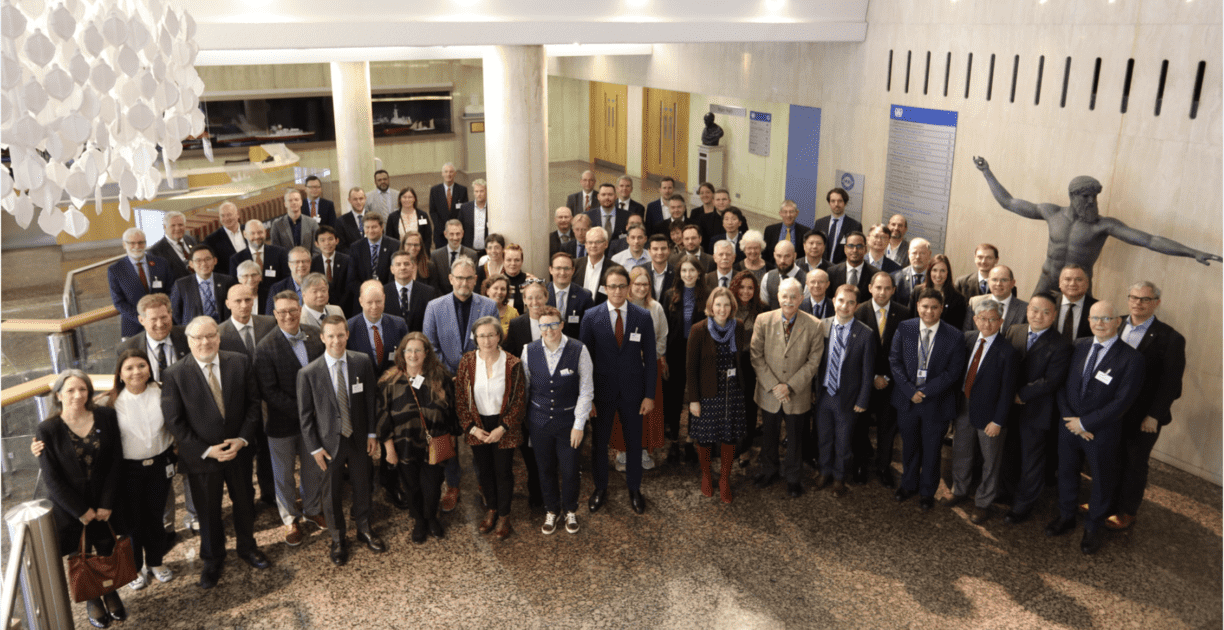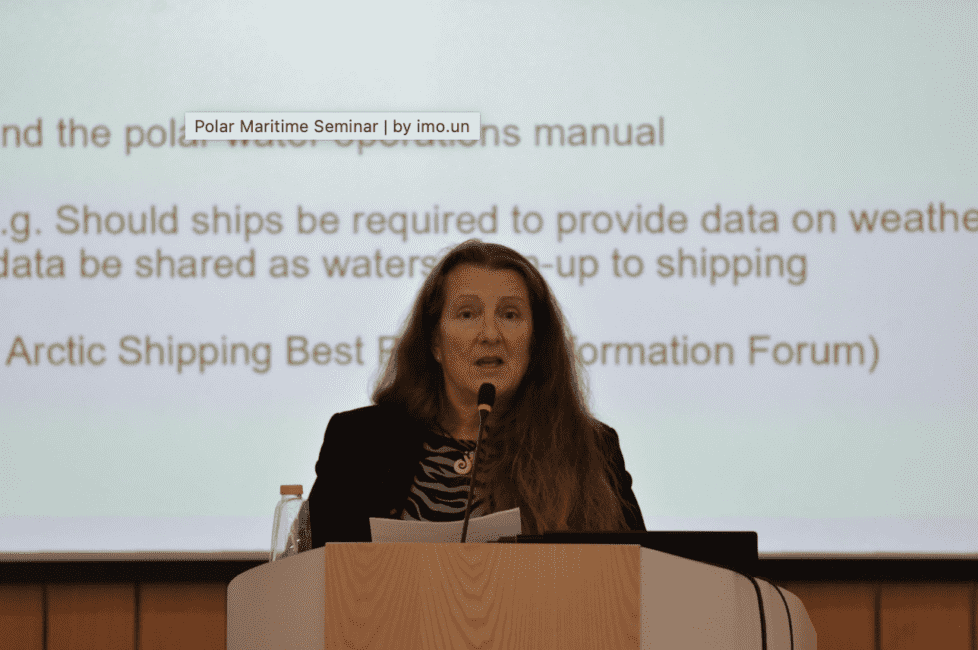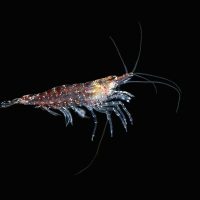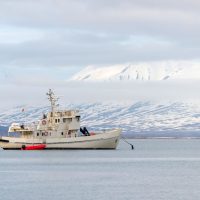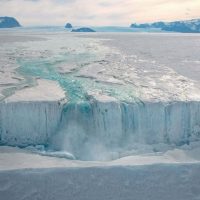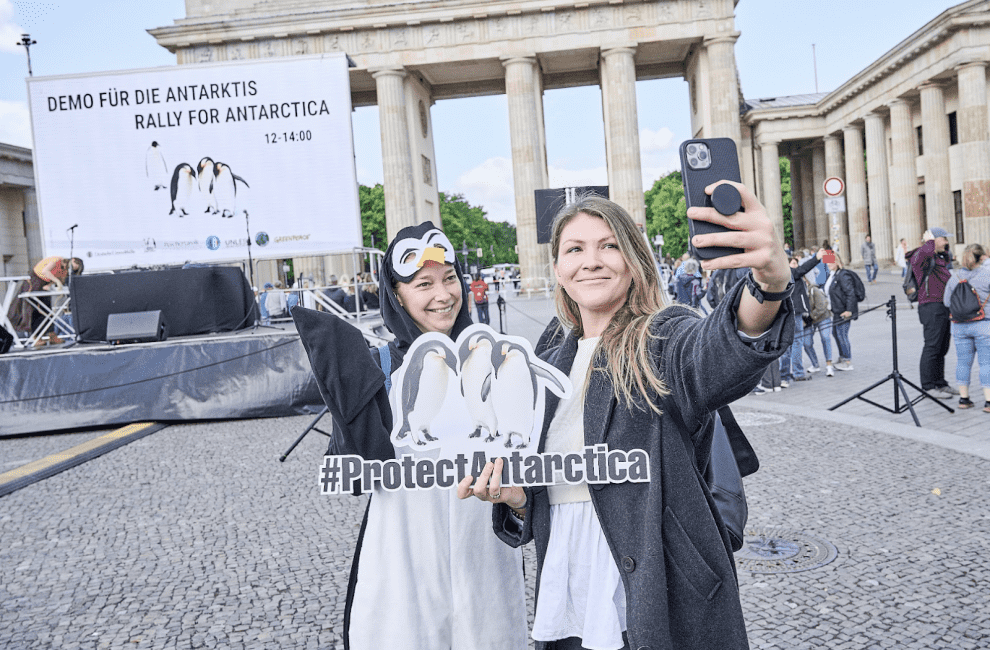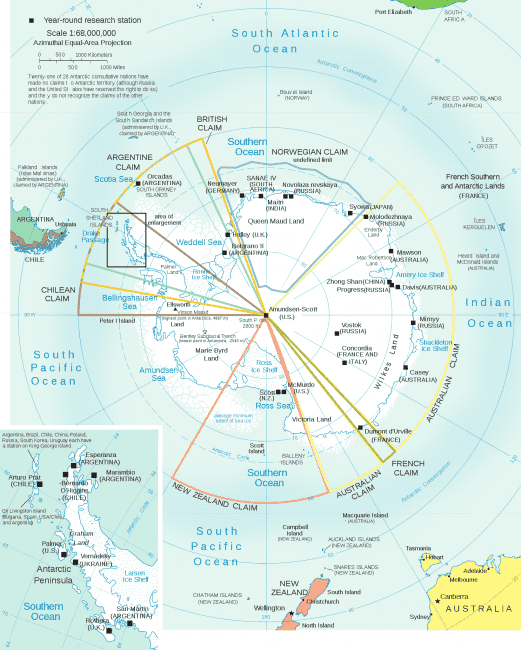
Introduction
Antarctic governance
Antarctica was the last continent discovered by humans. Isolated for millennia by extreme cold and the wild Southern Ocean, humans first laid eyes on its icebound coastline in 1820. Since then, the question of who owns Antarctica has been a source of international interest.
Early visitors reported abundant natural resources in the form of seals and whales. In the 19th century, lucrative industries sprung up around the subantarctic and the Antarctic Peninsula, exploiting seal pelts and whale blubber, and decimating their populations.
As the world became aware of the economic and geopolitical value of Antarctica, interest in the continent grew. By the mid-1900s, seven nations had made claims to sectors of Antarctic territory: Argentina, Australia, Chile, France, New Zealand, Norway, and the United Kingdom. These claims were not recognized by all nations. Some claims overlapped and began to be disputed, causing tension.
International Geophysical Year
Antarctic governance
From the 1940s, tension grew about the uncertain status of Antarctica. Several incidents, including the German capture of two Norwegian whaling ships in Antarctic waters in 1941, sparked international concern. By the 1950s, fears of militarization, nuclear testing and waste disposal in Antarctica grew amid the global instability caused by the Cold War.
The International Geophysical Year (IGY) in 1957-58 was a turning point for Antarctica. The largest and most important international scientific effort ever undertaken at the time, the IGY involved 67 countries and over 4000 scientists. While the project was global, there was a focus on Antarctica’s role in the earth system, and researchers from 12 nations worked together to gain insights into the continent.
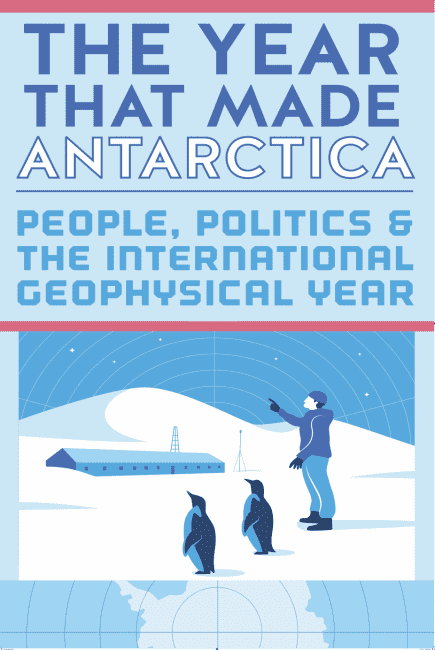
International Geophysical Year
Antarctic governance
Researchers in Antarctica made ground-breaking discoveries in the fields of glaciology, magnetism, meteorology, and land biology, demonstrating the importance of Antarctic research in understanding our planet. The IGY also demonstrated that by setting aside political barriers, we can accomplish ground-breaking scientific research in the most extreme environment on earth.
The success of the IGY was transformative. The twelve nations* involved, seven of which had previously made claims to Antarctic territory, agreed to meet to secure a peaceful future for Antarctica. Discussions to negotiate a Treaty began immediately. The result of these discussions was the Antarctic Treaty, that set aside political differences, and put international collaboration and scientific research at its core.
*Argentina, Australia, Belgium, Chile, France, Japan, New Zealand, Norway, South Africa, the USSR, the United Kingdom, and the United States.

ANTARCTIC GOVERNANCE
Antarctic Treaty Preamble
‘It is in the interest of all mankind that Antarctica shall continue forever to be used exclusively for peaceful purposes and shall not become the scene or object of international discord.’

The Antarctic Treaty
Antarctic governance
The Antarctic Treaty was signed in Washington on 1 December 1959 by 12 nations: Argentina, Australia, Belgium, Chile, France, Japan, New Zealand, Norway, South Africa, the USSR, the United Kingdom, and the United States. It entered into force in 1961, and applies to the area south of 60°South Latitude, including all ice shelves.
The Treaty established Antarctica as a region free from military activity and encourages cooperation, peaceful conflict resolution and the exchange of scientific information between nations. It ushered in an era of unprecedented international cooperation in the realms of both Antarctic science and governance.
Click here to read the original text.
ANTARCTIC GOVERNANCE
The Antarctic Treaty
The Antarctic Treaty outlines the fundamental principles of Antarctic governance.

Peace
A continent for peace and science
Article 1 of the Antarctic Treaty states that:
Antarctica shall be used for peaceful purposes only.
There shall be prohibited, inter alia, any measures of a military nature . . . [except] for scientific research or for any other peaceful purpose.
Image: An original copy of the Antarctic Treaty at the Tasmanian Museum and Art Gallery. Wikimedia Commons.

Science
Scientific research is front and center
Article II of the Antarctic Treaty states that:
Freedom of scientific investigation in Antarctica and cooperation toward that end, as applied during the International Geophysical Year, shall continue . . .
Image credit: ©ACE CRC

Cooperation
International cooperation is necessary
Article III of the Antarctic Treaty states that:
(a) information regarding plans for scientific programs in Antarctica shall be exchanged to permit maximum economy and efficiency of operations;
(b) scientific personnel shall be exchanged in Antarctica between expeditions and stations;
(c) scientific observations and results from Antarctica shall be exchanged and made freely available.

Stability & Security
All disputes over territory are put aside for the life of the Treaty
Article IV of the Antarctic Treaty states that:
No acts or activities taking place while the present Treaty is in force shall constitute a basis for asserting, supporting or denying a claim to territorial sovereignty in Antarctica. No new claim, or enlargement of an existing claim, to territorial sovereignty shall be asserted while the present Treaty is in force.
Antarctic decision-making
Antarctic governance
Antarctic Treaty Parties meet annually at Antarctic Treaty Consultative Meetings (ATCMs). Representatives from each country discuss issues facing Antarctica and share information about their recent Antarctic activities. They make consensus-based decisions on matters including scientific cooperation, field operations and environmental protection. When an issue needs to be discussed in greater depth, an Antarctic Treaty Meetings of Experts (ATME) may be called.
How does the Treaty become law?
Antarctica is governed by international law under the Treaty system. Anyone who visits or works in Antarctica is subject to the laws of the Antarctic Treaty that have been ratified in their home country. For example, in the United States, the Antarctic Conservation Act and Permits contain laws relating to U.S citizens in Antarctica.

The Treaty today
Antarctic governance
Over the past 50 years, the Antarctic Treaty has grown from 12 to 56 signatory nations. Any member of the United Nations can accede to the Treaty, and membership is still growing today.
Of the current members, 12 are original members and Consultative Parties, while 17 are Consultative Parties, a status gained by conducting significant research in Antarctica. Consultative Parties attend annual meetings and vote on decisions about the governance of Antarctica.
The other 27 nations are Non-Consultative Parties. They attend annual meetings but can’t vote. If they demonstrate a significant investment in scientific research, they can move to Consultative Party status. You can see a full list of current Parties to the Treaty here.
In the fulfillment of the IGY vision, today there are about 80 scientific bases across Antarctica, operated by around 30 different countries. Scientists of all nationalities work together, sharing resources and data to achieve the best research outcomes for everyone.

ANTARCTIC GOVERNANCE
The Antarctic Treaty System
Since 1959, the Antarctic Treaty has evolved to respond to new issues facing the region. Today the Antarctic Treaty System includes the Treaty itself, plus three related agreements.
ANTARCTIC GOVERNANCE
Antarctic Treaty System

The Antarctic Treaty
The Antarctic Treaty is the first pillar of the Antarctic Treaty System. Entering into force in 1961, the Treaty outlines the fundamental principles underlying Antarctic governance. It establishes Antarctica as a region free from military activity, where scientific collaboration and peaceful conflict resolution prevail.
Read the Antarctic Treaty.
Image: An original copy of the Antarctic Treaty at the Tasmanian Museum and Art Gallery. Wikimedia Commons.

The Convention for the Conservation of Antarctic Seals (CCAS)
Adopted in 1972, CCAS established measures to conserve Antarctic seal populations. Although the Convention allows permit-holders to hunt seals commercially, this has not taken place in Antarctica for over 50 years.
Read about CCAS.

The Convention on the Conservation of Antarctic Marine Living Resources (CCAMLR)
Adopted in 1980, CCAMLR is responsible for the conservation of living marine resources in the Southern Ocean.

Protocol on Environmental Protection to the Antarctic Treaty
The Protocol on Environmental Protection to the Antarctic Treaty was agreed in 1991 and came into force in 1998. Also known as the Madrid Protocol, this document is responsible for securing Antarctica’s status as the greatest shared, protected wilderness on our planet.
Environmental Protocol and the mining ban
Antarctic Governance
The Protocol on Environmental Protection to the Antarctic Treaty officially designates Antarctica as a ‘natural reserve, devoted to peace and science,’ and implements a ban on any ‘activities relating to Antarctic mineral resources, except for scientific research.’ This ban will remain in place indefinitely, however there is a provision that allows Parties to request a review of the Protocol in 2048.
After this review it may be possible to amend any part of the Protocol, but there are strict requirements for doing so. Before any change could be made, it would have to be agreed by a majority of Antarctic Treaty Consultative Parties, including three quarters of those that were Consultative Parties at the signing of the Protocol in 1991.
Environmental Protocol and the mining ban
Antarctic Governance
For that change to come into force in international law, it would need to be ratified by three quarters of the Antarctic Treaty Consultative Parties, including all that were Consultative Parties when the Protocol was originally signed.
Even if Parties agreed to lift the prohibition on mining, mining could not occur until a comprehensive, binding legal regime on Antarctic mineral resource activities was in force. This is an extremely high bar to set, making it very unlikely that there will be any change to the Protocol in 2048.
ANTARCTIC GOVERNANCE
Related organizations
Several other agencies and international organizations support the Antarctic Treaty Parties in their work. These bodies may be asked to provide specialist advice to Antarctic Treaty Parties, or contribute expertise to Antarctic Treaty meetings and other related forums.

Scientific Committee on Antarctic Research (SCAR)
The Scientific Committee on Antarctic Research (SCAR) coordinates Antarctic research programs and encourages scientific cooperation.
Through its various subordinate groups it is able to provide expert information on a range of disciplines and on the scientific implications of operational proposals of the Treaty meetings.
Image courtesy of NSIDC/ Ted Scambos/ Rob Bauer.
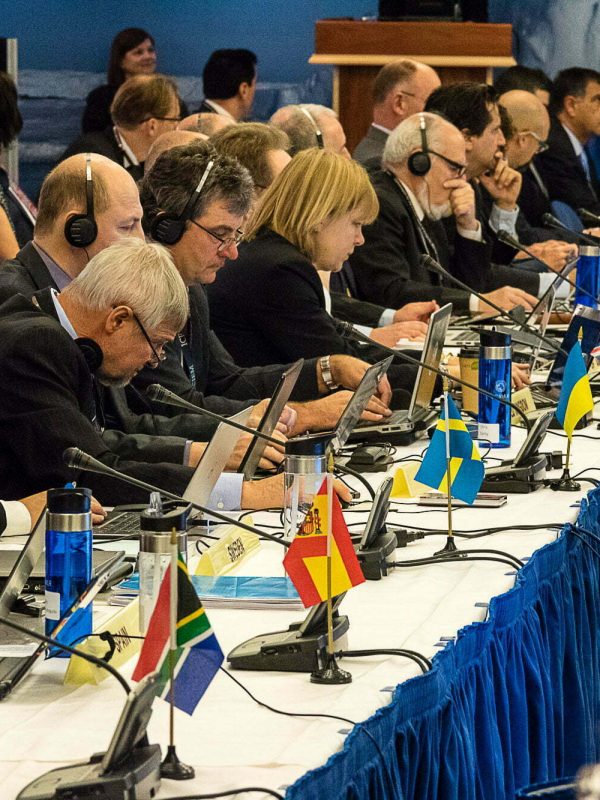
COMNAP
The Council of Managers of National Antarctic Programs comprises the heads of each of the national Antarctic operating agencies.
COMNAP meets annually to exchange logistic information, encourage cooperation and develop advice to the Treaty Parties on a range of practical matters.

EXPERTS
Groups with technical expertise relevant to Antarctic governance are invited to participate in and contribute to Antarctic Treaty meetings.
These organizations include the International Hydrographic Organization, the World Meteorological Organization and the Intergovernmental Oceanographic Commission of UNESCO.
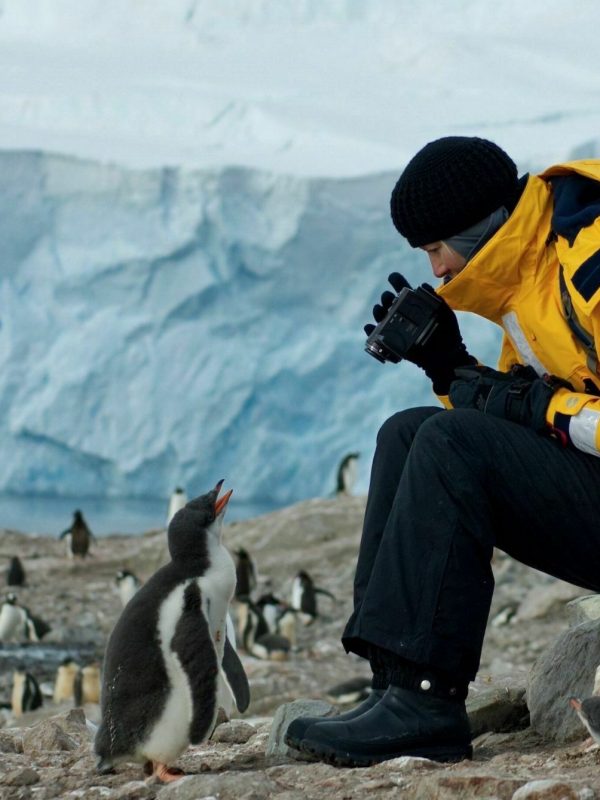
INDUSTRY
The International Association of Antarctic Tour Operators is an international industry body established by Antarctic tour operators.
IAATO was founded in 1991 to ‘advocate and promote the practice of safe and environmentally friendly private-sector travel to the Antarctic.’
Since then, IAATO has developed extensive operational procedures and guidelines, many of which have been adopted as regulations by Antarctic Treaty nations.
Today IAATO is an invited expert at Antarctic Treaty Consultative Meetings, representing the Antarctic tourism industry and its more than 100 member organizations.
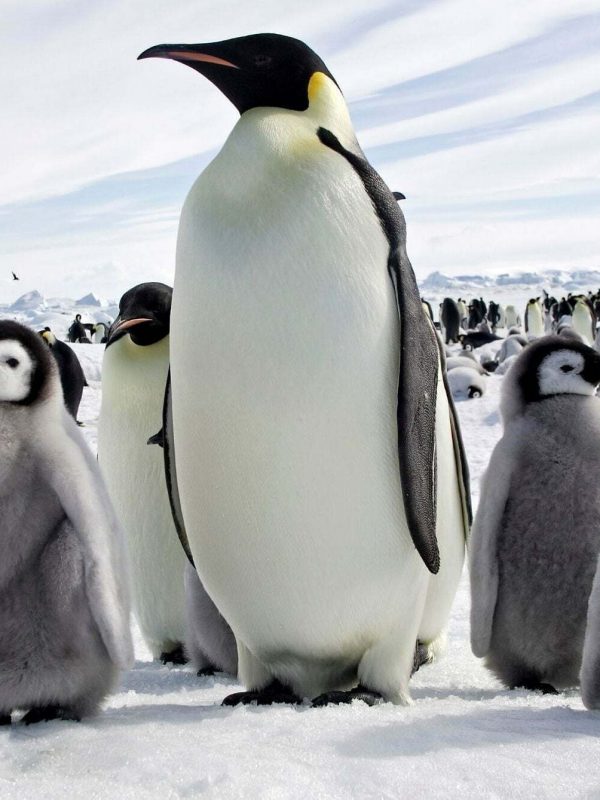
NGOs
The Antarctic Treaty Parties have also developed close relationships with many environmental organizations that represent the interests of the global conservation community.
Organizations such as the International Union for the Conservation of Nature, the United Nations Environment Program and the Antarctic and Southern Ocean Coalition are invited to the Treaty meetings as experts.
ASOC in the ATS
Antarctic governance
As an environmental non-governmental organization (NGO), ASOC is invited to attend and contribute to Antarctic governance meetings. We send delegations to submit science-based policy proposals on environmental issues, meet with government officials to represent the position of the Antarctic conservation community, and monitor official decisions.
Although we do not cast votes, ASOC plays an important role in the consensus-based decision making process by providing governments with timely information on contentious issues to illustrate the need for urgent action.
ANTARCTIC GOVERNANCE
International Agreements
In addition to the Antarctic Treaty System, there are several international conventions, agreements and organizations that play a role in Antarctic governance. Together, they contribute to how individual species are monitored and protected, and how certain industries and human activities are conducted and regulated in Antarctica and the Southern Ocean.

Southern Ocean Shipping

Protecting Antarctic Wildlife
Southern Ocean Shipping
Antarctic governance
Each year hundreds of vessels sail the Southern Ocean in the service of Antarctic science, fisheries and tourism. Any incidents, oil spills, or dumping of waste in the Southern Ocean can have significant impacts on vulnerable polar ecosystems.
Shipping in the Southern Ocean is particularly high-risk due to cold temperatures, powerful storms, and hazardous icebergs. Ships need to be ice-strengthened, and crews need special training to minimize the risk of accidents. Oil spills present a particular threat to polar waters as oil takes longer to dissipate in colder waters than warmer ones.
While CCAMLR is responsible for conserving and managing the entire Southern Ocean ecosystem, and Annex IV (Marine Pollution) of the Protocol on Environmental Protection ot the Antarctic Treaty contributes to the regulatory framework, international shipping and sea travel is regulated principally by the International Maritime Organization via flag state nations.
The IMO in Antarctica
Antarctic governance
The International Maritime Organization (IMO) is a specialized agency of the United Nations (UN) responsible for the safety, security and environmental performance of shipping worldwide. The IMO has a mandate to regulate maritime issues under the United Nations Convention on the Law of the Sea (UNCLOS). Its main role is to create a regulatory framework for the shipping industry that is fair and effective, universally adopted and implemented, which results in a safe, secure, and efficient international shipping industry.
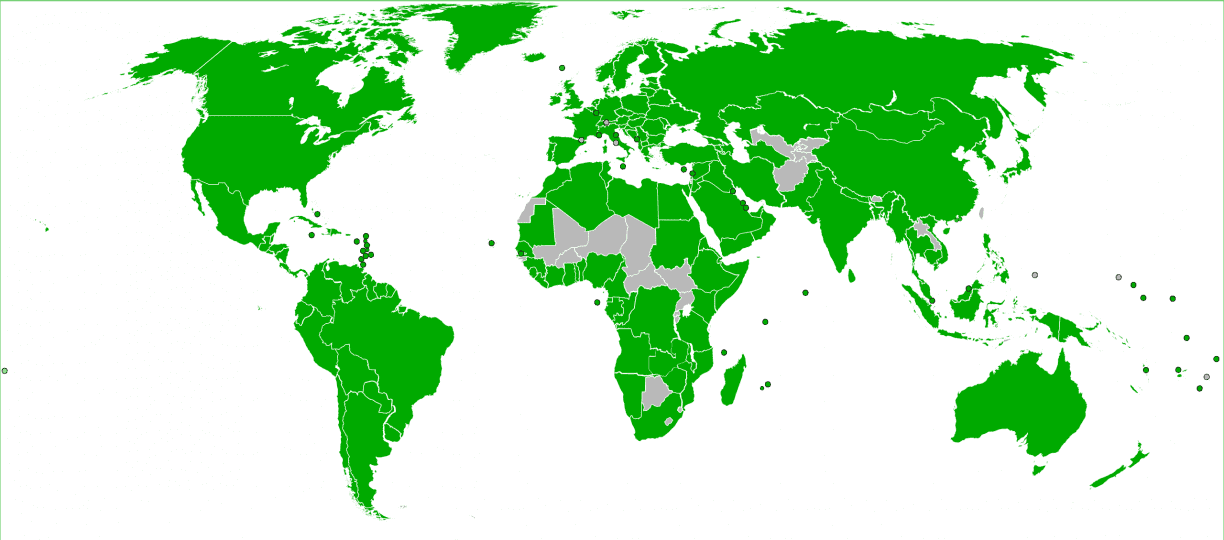
The IMO in Antarctica
Antarctic governance
Originally established to avoid human tragedies like the sinking of the Titanic, the IMO’s mission has expanded to include protection for the marine environment including the prevention of oil spills, management of wastewater and atmospheric pollution, and the management of Particularly Sensitive Sea Areas (PSSA). There are several IMO conventions that apply to vessels sailing on the Southern Ocean (see below).As of March 2023 the IMO has 175 Member States and three Associate Members. Over 100 organizations, both non-governmental and intergovernmental, are invited to observe, participate in or contribute their expertise to IMO meetings. Find out more.
ANTARCTIC GOVERNANCE
International Maritime Conventions
There are several international maritime conventions that apply to shipping in the Southern Ocean.
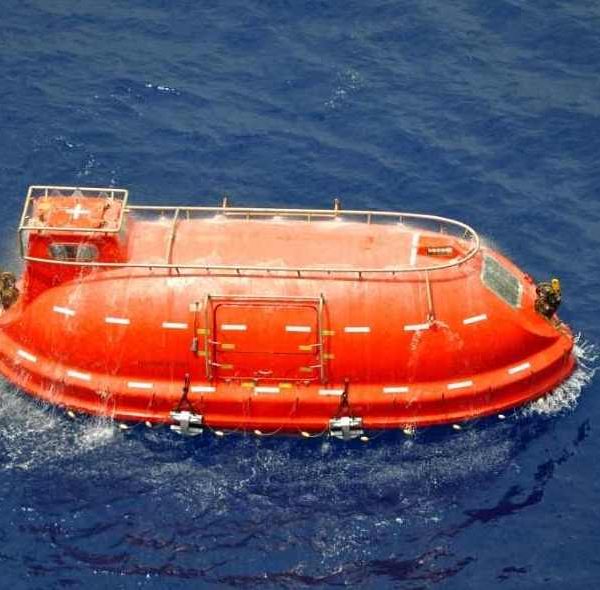
SOLAS
The International Convention for the Safety of Life at Sea (SOLAS) is an international maritime treaty that sets minimum safety standards in the construction, equipment and operation of merchant ships.
Ships sailing under the flags of signatory states must comply with these standards, at a minimum.
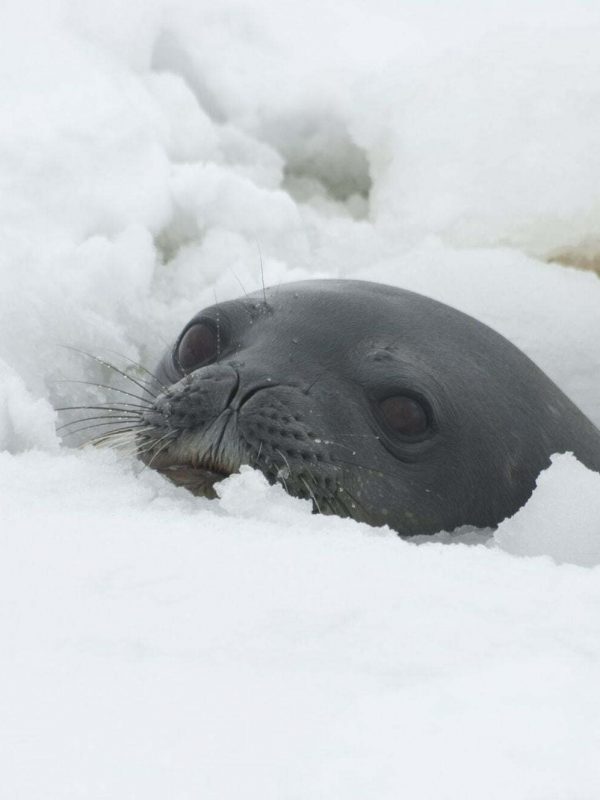
MARPOL
The International Convention for the Prevention of Pollution from Ships (MARPOL) is the main international convention that covers the prevention of pollution of the marine environment by ships from operational or accidental causes.
The MARPOL Convention was adopted on 2 November 1973.
In 2010, a new MARPOL regulation was adopted to protect the Antarctic from pollution by heavy grade oils.

POLAR CODE
The International Code for Ships Operating in Polar Waters (Polar Code) entered into force in 2017, introducing the first mandatory, legally-binding safety and pollution-prevention measures for polar waters.
Adopted by the members of the IMO under the auspices of the United Nations, it was the first agreement of its kind created specifically for the polar regions.
ANTARCTIC GOVERNANCE
Protecting Antarctic Wildlife
In addition to the instruments of the Antarctic Treaty System, there are several international conventions and agreements that contribute to the conservation of migratory species that visit Antarctica.
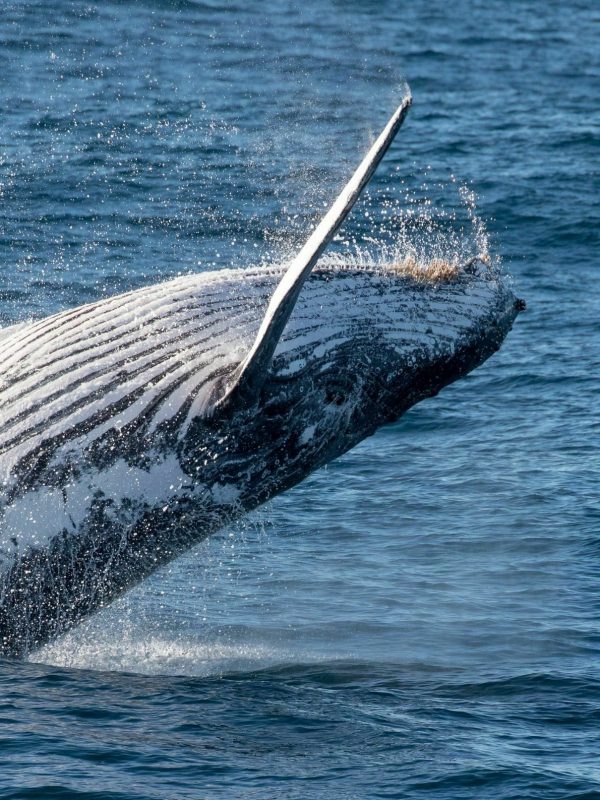
WHALES
International Whaling Commission (IWC)
The International Whaling Commission (IWC) was established in Washington DC in December 1946.
Created under the International Convention for the Regulation of Whaling, the IWC is the global body responsible for management of whaling and conservation of whales.
The IWC has 88 member countries, including all members of the Antarctic Treaty except Ukraine. The IWC holds annual meetings, which ASOC is invited to attend as an observer.
Today, the IWC mandate remains the same, and its work includes bycatch and entanglement, ship strikes, ocean noise, pollution and debris, and sustainable whale watching.
In 1994, the International Whaling Commission established the Southern Ocean Whale Sanctuary. The sanctuary surrounds Antarctica and bans all types of commercial whaling in the area.
Learn more about the IWC here.

Image credit: Wikimedia Commons Author: Lokal Profil
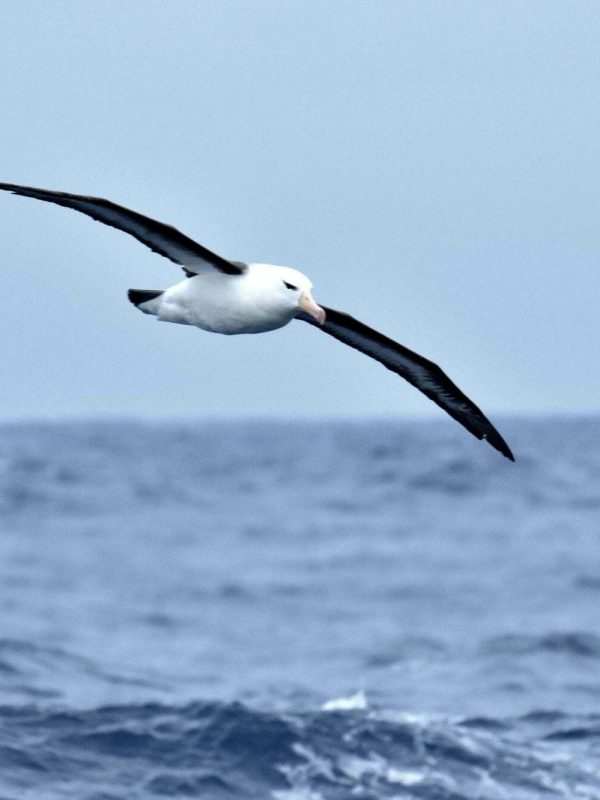
SEABIRDS
Agreement on the Conservation of Albatrosses and Petrels
The Agreement on the Conservation of Albatrosses and Petrels (ACAP) was signed in 2001 in response to concerns over dramatic decreases in many seabird populations, primarily albatrosses and petrels in the Southern Hemisphere. These declines are linked to seabird bycatch from fishing, and are also connected to the presence of predatory invasive species such as cats and rats in many of their nesting areas.
ACAP currently has 13 signatories, all of which are also Parties to the Antarctic Treaty. The United States has expressed interest in ratification, and in 2019 made moves towards implementing an Albatross and Petrel Conservation Act.
ACAP calls on its signatories to enact measures to protect and restore habitats, control invasive species populations, conduct research on seabird populations, and enact fishing regulations that minimize seabird bycatch.
ACAP holds regular Meetings of the Parties (MoP), where Parties to the Agreement meet to discuss progress in albatross and petrel conservation and make decisions about future actions. ASOC attends these meetings as an observer.
You can find more information about ACAP and its activities on their website.

A global effort
Antarctic Governance
As you can see, Antarctic governance is a truly global affair, with many groups and individuals around the world working together to protect Antarctica. There is also a growing, worldwide network of Antarctic enthusiasts and supporters advocating for its protection: people just like you.
What happens in Antarctica affects us all, whether it’s through melting ice causing rising sea levels, changing ocean currents affecting global temperatures, or collapsing penguin colonies.
No matter who you are or where you live, you can do something today to help protect Antarctica into the future.
KEEP LEARNING
Related reading
Academic consultation: Dr. Tony Press, Adjunct Professor at the Institute for Marine and Antarctic Studies, Australian Antarctic Program Partnership, University of Tasmania; former Head of Australian Antarctic Division; former Australian CCAMLR Commissioner, and Dr. Indi Hodgson-Johnston, Adjunct Researcher in Antarctic and oceans law and policy at the Institute for Marine and Antarctic Studies and Australian Antarctic Program Partnership at the University of Tasmania.
Now you’ve learned about Antarctic governance, read on to learn more about the important issues facing Antarctic decision-makers today.
 ASOC
ASOC


